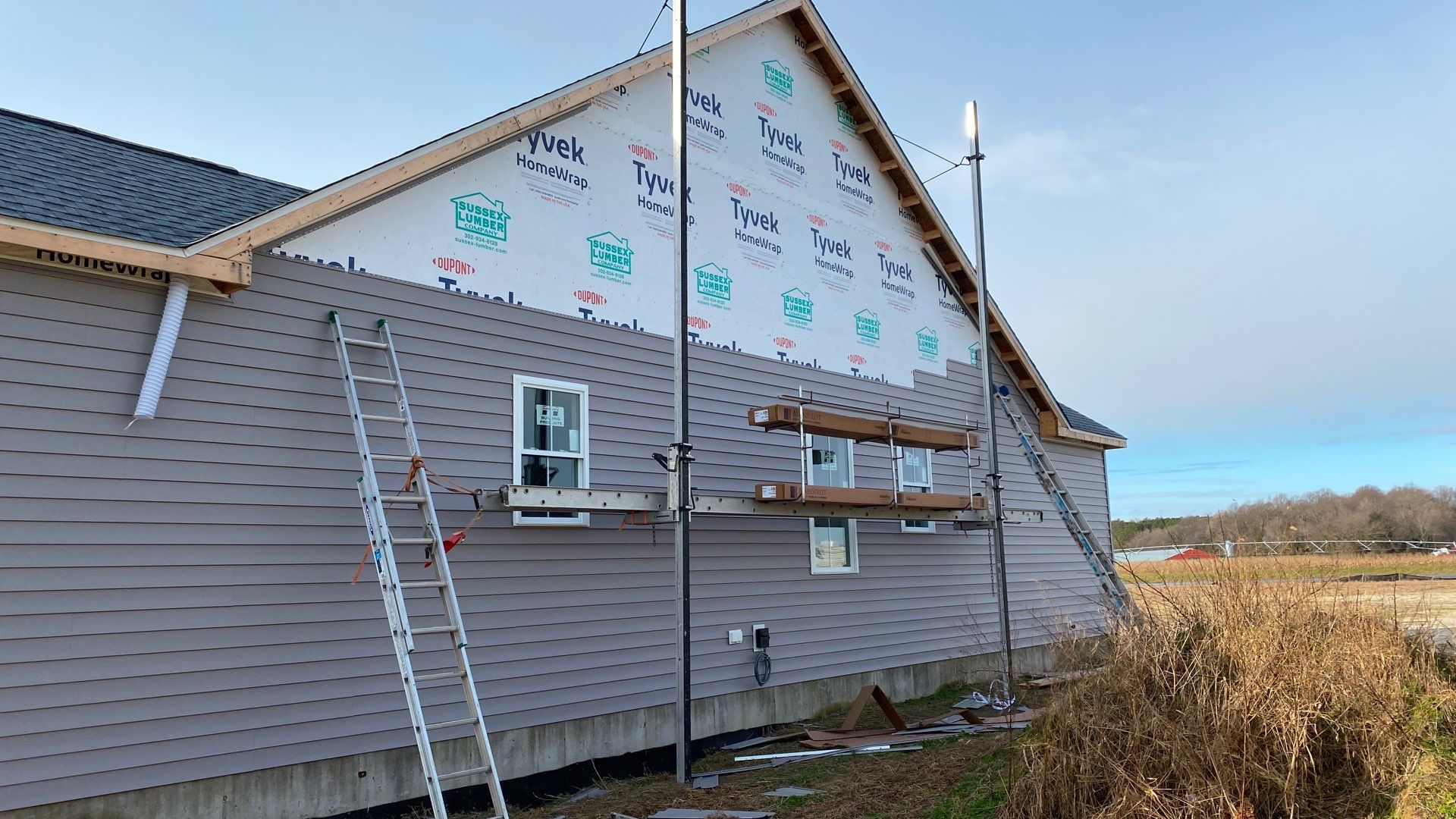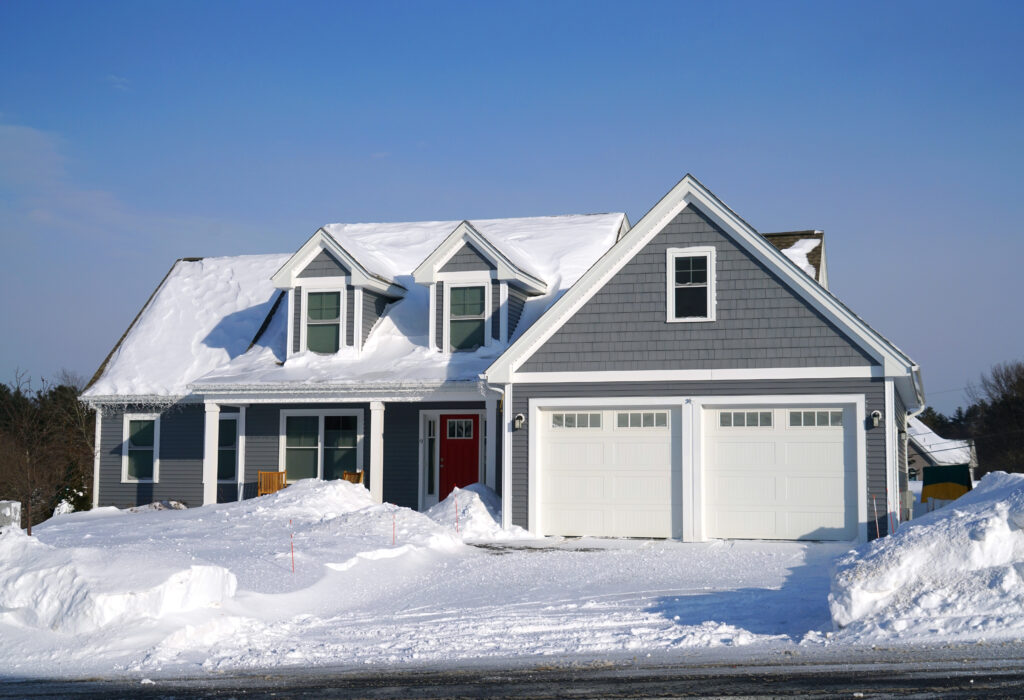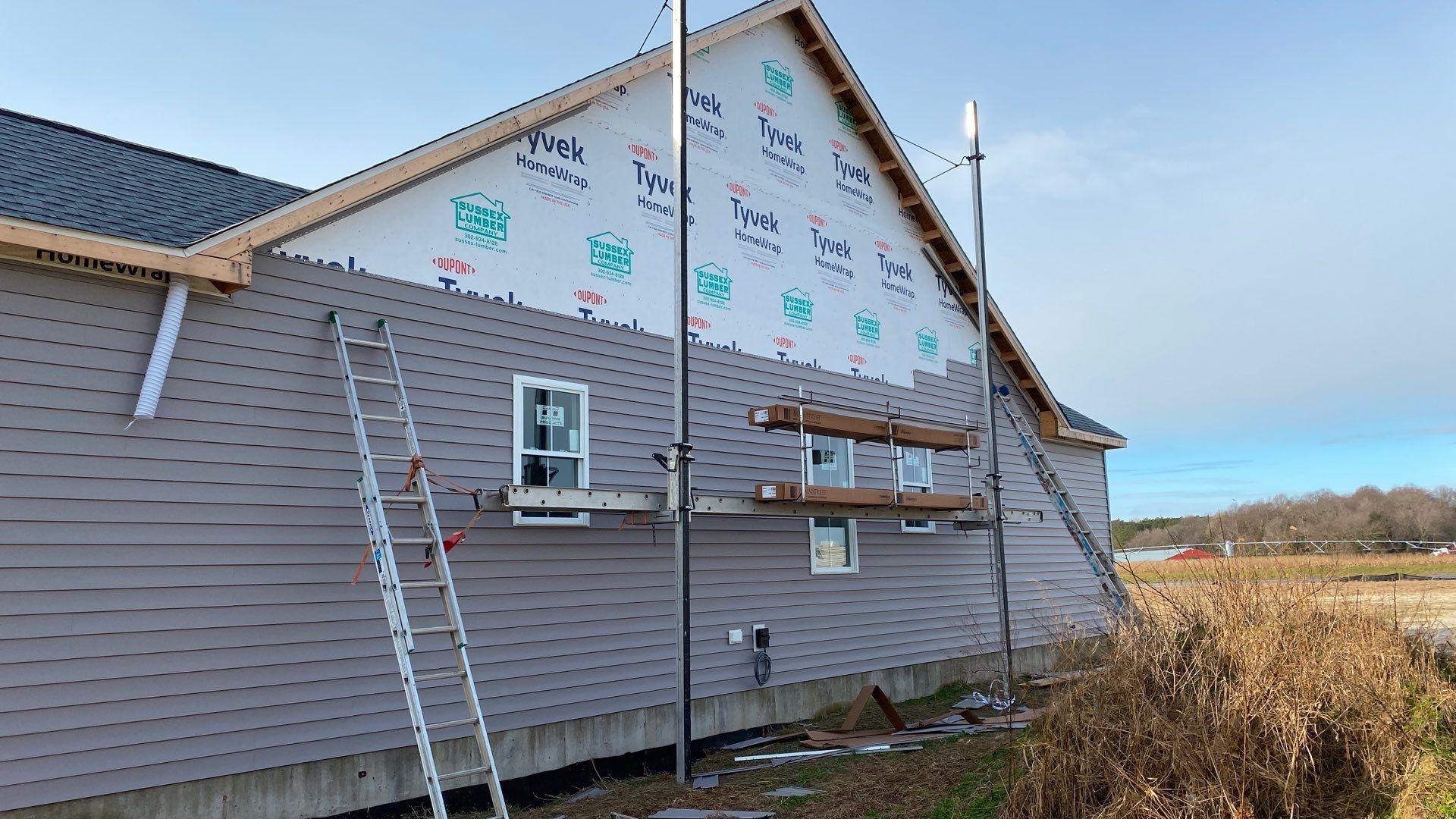Benefits of Insulated Siding: A Homeowners Guide

Benefits of insulated siding extend far beyond mere aesthetics. This upgrade offers a compelling blend of energy efficiency, cost savings, enhanced comfort, and lasting durability. Investing in insulated siding isn’t just about improving your home’s exterior; it’s about creating a healthier, more comfortable, and environmentally responsible living space. This guide will explore the multifaceted advantages, revealing why it’s a smart choice for homeowners seeking long-term value and peace of mind.
From reducing energy bills and minimizing your carbon footprint to increasing your home’s resale value and improving indoor comfort, insulated siding provides a remarkable return on investment. We’ll delve into the specifics, comparing it to traditional siding options and highlighting the unique benefits of each type of insulated siding available.
Energy Efficiency
Insulated siding offers a significant advantage in reducing energy consumption, leading to lower utility bills and a smaller environmental footprint. By creating a thermal barrier, it prevents heat from escaping your home in winter and keeps cool air inside during summer. This translates to tangible savings on your energy bills and a positive impact on the planet.
Insulated siding works by trapping air within its layers. This trapped air acts as an insulator, significantly reducing the rate of heat transfer through your exterior walls. During cold months, less heat escapes, reducing the workload on your heating system. Conversely, during hot months, less heat enters, minimizing the strain on your air conditioning. This dual action contributes to substantial energy savings throughout the year.
Energy Bill Comparisons
Studies have shown that homes with insulated siding experience a noticeable decrease in energy costs compared to those with traditional siding. For example, a typical home in a moderate climate might see a reduction of 15-25% on annual heating and cooling bills after installing insulated siding. This translates to hundreds, even thousands, of dollars saved over the lifespan of the siding. Imagine the difference: instead of spending that money on energy, you could invest it in home improvements, family vacations, or simply save for the future.
Environmental Impact
The energy savings provided by insulated siding directly contribute to a reduced carbon footprint. By consuming less energy, you are lessening your reliance on fossil fuels, which are major contributors to greenhouse gas emissions. This simple change in your home’s exterior can make a significant contribution towards a more sustainable future, reducing your impact on climate change. Every little bit helps, and insulated siding is a tangible step you can take.
Energy Efficiency Comparison Table
It’s helpful to compare insulated siding to other exterior wall systems to fully appreciate its benefits. The following table illustrates the differences in energy efficiency, using R-value as a measure of thermal resistance. Remember that a higher R-value indicates better insulation. Initial costs can vary depending on materials and installation.
| Siding Type | R-Value | Energy Savings Percentage (Estimate) | Initial Cost (Estimate) |
|---|---|---|---|
| Vinyl Siding (Non-Insulated) | 0 | 0% | $5,000 – $15,000 |
| Fiber Cement Siding (Non-Insulated) | 0 | 0% | $10,000 – $25,000 |
| Insulated Vinyl Siding | 4-7 | 15-25% | $8,000 – $20,000 |
| Insulated Fiber Cement Siding | 4-8 | 15-30% | $15,000 – $35,000 |
Note: R-values and cost estimates are approximate and can vary depending on factors such as thickness, material, and installation. Energy savings percentages are based on average home energy usage and climate conditions.
Cost Savings
Investing in insulated siding offers significant long-term financial benefits that extend far beyond the initial purchase price. The combination of reduced energy consumption and minimized maintenance needs translates into substantial savings over the lifespan of your home. This makes insulated siding a smart and worthwhile investment, often outperforming other home improvement projects in terms of return on investment.
Insulated siding’s ability to drastically reduce energy bills is a key driver of its cost-effectiveness. By creating a superior thermal barrier, it minimizes heat loss in winter and heat gain in summer, leading to lower reliance on heating and cooling systems. This translates directly into lower utility bills, a noticeable difference in your monthly budget. Furthermore, the protective layer provided by insulated siding significantly reduces the need for frequent repairs and repainting, leading to lower maintenance costs compared to traditional siding materials. This long-term cost reduction is a crucial factor in calculating the overall return on investment.
Return on Investment (ROI) of Insulated Siding
The ROI of insulated siding is often superior to many other home improvement projects. While the initial investment is higher than that of some siding options, the long-term savings in energy costs and reduced maintenance quickly offset this difference. For example, a homeowner in a colder climate might see a payback period of just five to seven years due to substantial heating cost reductions. In warmer climates, the focus shifts to cooling savings, still resulting in a strong positive ROI over the long run. This is in contrast to projects like landscaping or cosmetic upgrades, which may not provide such a clear and quantifiable financial return.
Comparison of Insulated Siding Types
The initial cost, annual energy savings, and payback period vary depending on the type of insulated siding chosen. The following table illustrates this, using hypothetical but realistic figures based on average energy costs and material prices. These figures should be considered estimates, and actual results may vary depending on factors like climate, home size, and energy efficiency of the existing structure.
| Insulated Siding Type | Initial Investment (USD) | Annual Energy Savings (USD) | Payback Period (Years) |
|---|---|---|---|
| Fiber Cement with Foam Insulation | $15,000 | $1,500 | 10 |
| Vinyl with Foam Insulation | $12,000 | $1,200 | 10 |
| Polyurethane Foam Siding | $18,000 | $2,000 | 9 |
Comfort and Indoor Climate
Imagine waking up to a consistently comfortable home, free from the extremes of outside temperatures. Insulated siding helps make this a reality, creating a haven of peace and tranquility within your walls. It’s more than just aesthetics; it’s about enhancing your daily life through a superior living environment.
Insulated siding significantly improves indoor comfort by acting as a barrier against temperature fluctuations. During summer, it helps keep the heat outside, preventing your home from becoming unbearably warm. In winter, it keeps the cold at bay, minimizing heat loss and ensuring a consistently cozy interior. This temperature regulation reduces the strain on your heating and cooling systems, leading to greater energy efficiency and a more comfortable living space. Drafts, often a source of discomfort, are also significantly reduced, creating a more even and pleasant temperature throughout your home.
Noise Reduction
Insulated siding provides a surprising benefit beyond temperature control: noise reduction. The added insulation layer acts as a sound buffer, muffling outside noises such as traffic, lawnmowers, and even boisterous neighbors. This creates a quieter, more peaceful home environment, ideal for relaxation, work, or simply enjoying the peace and quiet. For example, a home situated near a busy road will experience a noticeable decrease in road noise with insulated siding, transforming a potentially stressful environment into a calmer, more serene one. This is particularly beneficial for families with young children or individuals who value a quiet and peaceful living space.
Enhanced Living Experience
The combined effect of consistent temperatures, reduced drafts, and minimized noise pollution creates a noticeably enhanced living experience. Imagine enjoying a quiet evening at home, undisturbed by the sounds of the outside world, in a space that is always comfortably warm in winter and refreshingly cool in summer. This consistent comfort contributes to a more relaxed and enjoyable home life, making your house a true sanctuary. The peace of mind knowing your home is effectively insulated against both temperature extremes and unwanted noise is priceless.
Durability and Maintenance
Insulated siding offers a compelling blend of energy efficiency and longevity, but understanding its durability and maintenance needs is crucial for making an informed decision. The lifespan and upkeep of your siding will depend heavily on the materials used and the climate you live in.
Choosing the right insulated siding means choosing a product that will stand the test of time and require minimal intervention. This section will explore the durability of common materials and compare their maintenance needs to those of traditional siding.
Insulated Siding Materials and Durability
The durability of insulated siding varies depending on the core material and the outer cladding. Common core materials include foam insulation (polyisocyanurate, polyurethane, or extruded polystyrene), while the outer layer might be vinyl, fiber cement, or engineered wood. Vinyl is generally very durable, resistant to rot, insect infestation, and moisture damage. Fiber cement offers exceptional strength and fire resistance, though it can be more susceptible to cracking than vinyl. Engineered wood siding, while aesthetically pleasing, often requires more maintenance to prevent water damage and decay. Foam insulation itself is highly resistant to moisture, pests, and decay, contributing significantly to the overall durability of the system.
Maintenance Comparison: Insulated vs. Traditional Siding
Let’s compare the maintenance demands of insulated siding with traditional options like wood or aluminum.
Understanding the differences in maintenance is key to making a cost-effective and time-saving choice. Insulated siding generally requires less maintenance than traditional materials.
- Insulated Siding Pros: Less frequent cleaning; reduced risk of rot, insect damage, and water intrusion; potentially longer lifespan.
- Insulated Siding Cons: Repairing damaged sections can be more complex than with some traditional sidings; certain types may be susceptible to cracking or discoloration over time depending on the material and climate.
- Traditional Siding Pros: Easier to repair minor damage; wider variety of styles and colors available (though this can also increase costs).
- Traditional Siding Cons: Requires more frequent painting or staining; higher risk of rot, insect infestation, and water damage; shorter lifespan compared to many insulated options.
Lifespan of Insulated Siding
The lifespan of insulated siding can range significantly based on material selection and climate conditions. In milder climates, vinyl insulated siding might last 30-50 years, while fiber cement could last 50 years or more. However, in harsher climates with extreme temperature fluctuations, heavy snowfall, or intense sunlight, these lifespans might be shortened. For example, a vinyl siding installation in a desert climate might experience premature fading and cracking due to prolonged UV exposure. Similarly, fiber cement in a consistently freezing environment could be more prone to cracking from freeze-thaw cycles. Regular maintenance, such as cleaning and prompt repair of any damage, can extend the lifespan of any type of siding regardless of climate.
Aesthetics and Curb Appeal
Insulated siding offers far more than just energy efficiency; it significantly enhances a home’s aesthetic appeal and overall curb appeal, boosting its market value. The wide variety of styles, colors, and textures available means you can find the perfect match for your home’s architectural style and personal preferences, transforming its exterior from ordinary to extraordinary.
Insulated siding’s ability to enhance a home’s curb appeal is undeniable. It provides a clean, fresh, and modern look, instantly revitalizing the exterior. The improved appearance can significantly increase a home’s property value, making it a worthwhile investment that pays off both in energy savings and increased equity.
Variety of Styles and Colors
The range of styles and colors available in insulated siding is extensive. From traditional clapboard to sleek, modern panels, the options are almost limitless. Popular colors include classic whites and creams, warm earth tones, and bold, contemporary shades. The textures also vary, offering choices ranging from smooth, polished finishes to those that mimic the look of natural wood or stone. This versatility ensures that homeowners can find a style that complements their existing landscaping and architectural design, creating a cohesive and visually pleasing exterior.
Enhanced Curb Appeal and Property Value
A home’s curb appeal is the first impression it makes, and a significant factor in its perceived value. Insulated siding dramatically improves this first impression. By replacing outdated or damaged siding, homeowners can create a more inviting and visually appealing facade. This not only enhances the home’s aesthetic appeal but also directly impacts its market value. Real estate agents often cite updated siding as a key factor in attracting buyers and commanding higher prices. A recent study showed homes with newly installed insulated siding sold for an average of 5% more than comparable homes with older siding.
Examples of Insulated Siding on Different Homes
Imagine three distinct homes:
The first, a charming colonial-style home, is clad in creamy white vinyl insulated siding with a subtle wood-grain texture. The color complements the home’s traditional architecture, creating a timeless and elegant look. The slightly textured surface adds depth and visual interest without being overly flashy.
The second, a contemporary ranch-style home, features sleek, dark gray fiber cement insulated siding. The smooth, modern finish reflects light beautifully, giving the home a clean and sophisticated appearance. The dark gray color creates a dramatic contrast against the surrounding landscape, emphasizing the home’s architectural lines.
The third, a rustic farmhouse, is adorned with warm brown insulated siding that mimics the look of natural wood. The texture is slightly rough, adding to the home’s rustic charm. The warm brown color complements the surrounding natural environment, creating a feeling of warmth and comfort. The overall visual impact is one of inviting country charm.
Environmental Impact
Choosing insulated siding offers more than just personal benefits; it’s a choice that positively impacts our planet. By reducing energy consumption and utilizing sustainable materials, insulated siding contributes to a greener future for all.
Insulated siding’s environmental advantages stem from its inherent design and the materials used in its production. These benefits extend across the entire product lifecycle, from manufacturing to disposal.
Recycled Materials in Insulated Siding Production
Many manufacturers now incorporate recycled materials into insulated siding. This reduces reliance on virgin resources, conserving natural materials and minimizing the environmental impact associated with their extraction and processing. For example, some siding uses recycled plastic or wood fibers in its composition, diverting waste from landfills and reducing the demand for newly harvested materials. The use of recycled content lowers the overall carbon footprint of the siding.
Contribution to Greenhouse Gas Emission Reduction
Insulated siding plays a significant role in reducing greenhouse gas emissions. Its superior insulation properties minimize the energy needed to heat and cool homes. Less energy consumption translates directly to fewer greenhouse gas emissions from power plants, a major contributor to climate change. Consider a home that reduces its energy consumption by 20% due to insulated siding; this translates to a significant reduction in its carbon footprint over its lifespan. This reduction contributes to a healthier planet and combats the effects of global warming.
Comparison of Environmental Impacts: Insulated vs. Traditional Siding
The following table compares the environmental impact of insulated siding manufacturing with that of traditional siding manufacturing. Note that these values are estimates and can vary based on specific manufacturing processes, materials used, and transportation distances.
| Siding Type | Manufacturing Emissions (kg CO2e/m²) | Transportation Emissions (kg CO2e/m²) | End-of-Life Impact |
|---|---|---|---|
| Insulated Vinyl Siding | 5-10 | 1-3 | Potentially recyclable, depending on local facilities. |
| Traditional Wood Siding | 10-20 (depending on sourcing and treatment) | 2-5 (depending on distance) | Biodegradable but often treated with chemicals affecting decomposition. |
| Traditional Aluminum Siding | 15-25 | 2-4 | Recyclable, but recycling rates are variable. |
*Note: CO2e represents carbon dioxide equivalent, a measure that accounts for the global warming potential of various greenhouse gases.* These figures are approximations and may vary depending on the specific manufacturing processes and materials used. The end-of-life impact also considers the ease of recycling and potential for reuse.
Last Point
Ultimately, the decision to install insulated siding is an investment in your home’s future. The long-term cost savings, enhanced comfort, and environmental benefits far outweigh the initial expense. By carefully considering the various types of insulated siding and their specific advantages, you can choose the perfect option to transform your home into a more energy-efficient, comfortable, and valuable asset. It’s more than just siding; it’s an investment in a better tomorrow.




